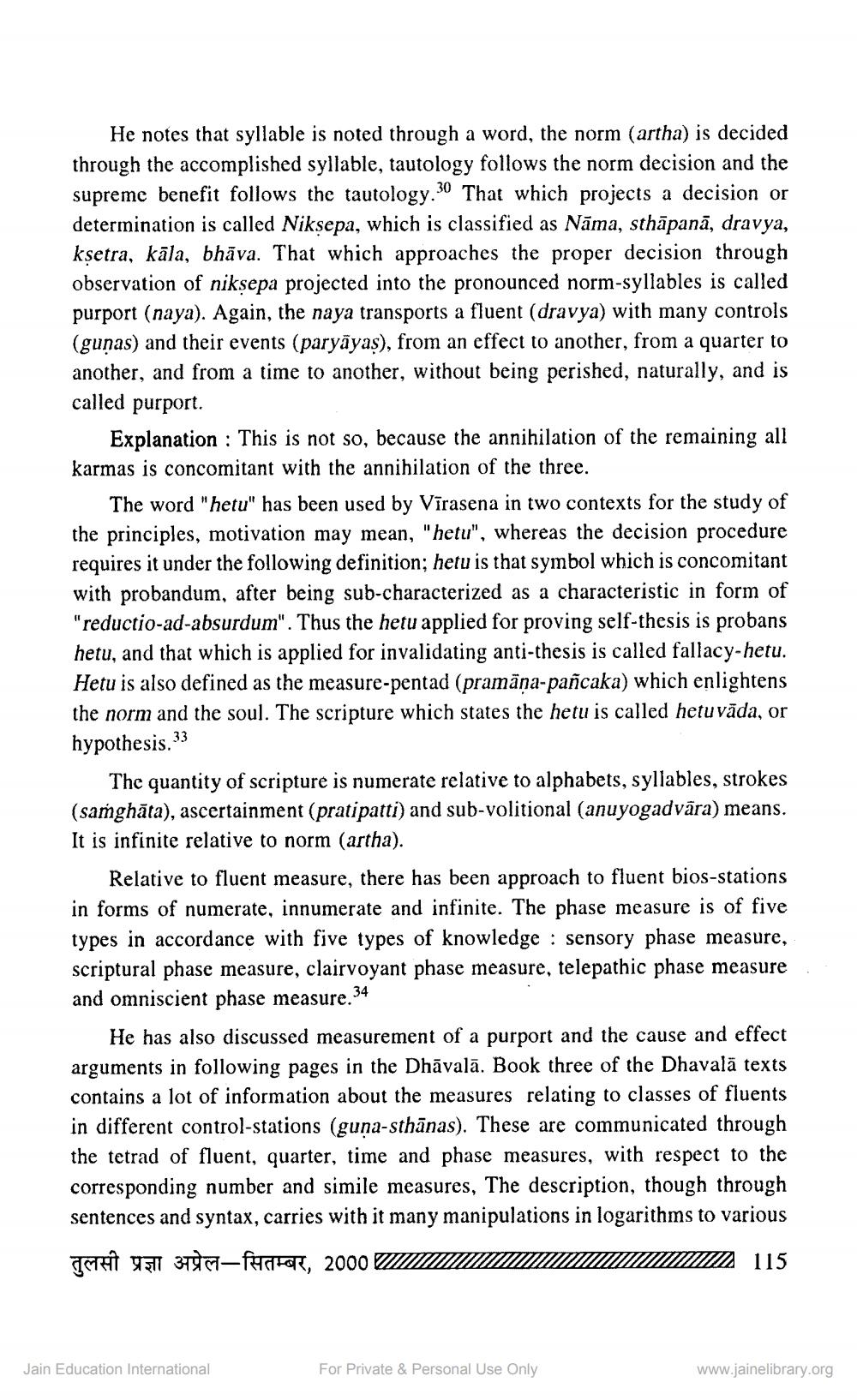________________
He notes that syllable is noted through a word, the norm (artha) is decided through the accomplished syllable, tautology follows the norm decision and the supreme benefit follows the tautology.30 That which projects a decision or determination is called Niksepa, which is classified as Nāma, sthāpanā, dravya, kşetra, kāla, bhāva. That which approaches the proper decision through observation of niksepa projected into the pronounced norm-syllables is called purport (naya). Again, the naya transports a fluent (dravya) with many controls (gunas) and their events (paryāyaş), from an effect to another, from a quarter to another, and from a time to another, without being perished, naturally, and is called purport.
Explanation : This is not so, because the annihilation of the remaining all karmas is concomitant with the annihilation of the three.
The word "hetu" has been used by Virasena in two contexts for the study of the principles, motivation may mean, "hetu", whereas the decision procedure requires it under the following definition; hetu is that symbol which is concomitant with probandum, after being sub-characterized as a characteristic in form of "reductio-ad-absurdum". Thus the hetu applied for proving self-thesis is probans hetu, and that which is applied for invalidating anti-thesis is called fallacy-hetu. Hetu is also defined as the measure-pentad (pramāna-pañcaka) which enlightens the norm and the soul. The scripture which states the hetu is called hetuvāda, or hypothesis. 33
The quantity of scripture is numerate relative to alphabets, syllables, strokes (samghāta), ascertainment (pratipatti) and sub-volitional (anuyogadvāra) means. It is infinite relative to norm (artha).
Relative to fluent measure, there has been approach to fluent bios-stations in forms of numerate, innumerate and infinite. The phase measure is of five types in accordance with five types of knowledge : sensory phase measure, scriptural phase measure, clairvoyant phase measure, telepathic phase measure and omniscient phase measure. 34
He has also discussed measurement of a purport and the cause and effect arguments in following pages in the Dhāvalā. Book three of the Dhavalā texts contains a lot of information about the measures relating to classes of fluents in different control-stations (guna-sthānas). These are communicated through the tetrad of fluent, quarter, time and phase measures, with respect to the corresponding number and simile measures, The description, though through sentences and syntax, carries with it many manipulations in logarithms to various Tore WF11 37063-fghale, 2000 WITAMININIT
115
Jain Education International
For Private & Personal Use Only
www.jainelibrary.org




